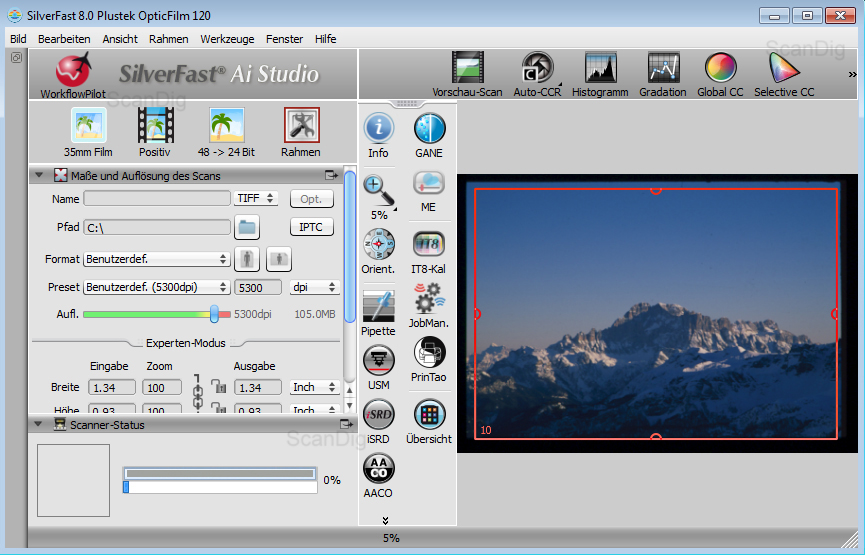

Silverfast 8.8 not scanning frames correctly software#
Do not let the scanning software do much to the scan. And it would be good if that software did not also have to work around whatever the less capable scanning software did to them.So scan only what you think will be usable. Scanning costs too much time already).The images you want to use will have to be treated in more capable software. Not to adjust and manipulate that signal and produce an optimal image.Quick and dirty scanning is good to get an impression of what it is on that film (though it's not that hard to read a negative, and i wouldn't spend time scanning negatives which you know are not going to be used. Scanning software is first and foremost made to drive the hardware and deliver what signal the hardware provides in a format other programs can use. I'll take a look at colorperfect, thanks for the suggestion. I have to create a separate frame for each image and look at each frame individually. It finds each half of the negative carrier (which contains three 120 images) and adjusts exposure based on that half, including the black borders that separate the negatives on the film. The "find frame" command does not find every frame on 120/220 film (I haven't tried 35mm). It would speed things up if I didn't have to enlarge the frame on every image. For instance, the thumbnail images show the "frame box" well within the black film borders but when I enlarge the frame, I ALWAYS have to adjust the frame box. The major time component so far, however, is having to look at and correct each and every image. I don't enjoy it, either, but I am learning so it's not all tedium. The older ones I've never seen printed or on screen.Ĭorrection DOES take a long time for me, time I don't have with so many negs. They're useful as a starting point.įor most of my photos, I don't care-about 99% aren't worth fooling with-but I'd like to see them. Silverfast has algorithms for most of the most popular films. This will shorten your scan time if correction takes a long time for you. It's a photoshop plugin that takes a raw (you will be bale to make them with Ai) file and magicly creates a color balanced image with dynamic range correction. One suggestion that would add to SilverfastAi, is colorperfect. Switching scanning software that you would have to relearn how you do things would be counter-productive. It works really well for me but is not a product plug. I'm not sure if Silverfast has such a beast. I use vuescan and apply it's own method to calibrate towards film base colour. Why make velvia look flat? You shoot velvia because of how it looks.

Most people who shoot chromes enjoy the over pronounced colours of a particular film type. I personally have one and consider a waste of money. You will need a target for every type of chrome film you have shot. It will give you further abilities for higher quality scans.Ī IT8 target will only help for chromes of a selected type.

How you do things are not likely to change. when a strip contains only 4 frames, frame 4 is scanned 3 times, producing 3 identical scan files.I can't see Ai speeding up your process. Also, each batch always produces 6 scan files, even if there are less frames. Only problem is that when frames are not correctly aligned, I need to cancel the batch, readjust and restart. I finally found the "Batch scan" function in the top row (wich is called "ADF scan" in the documentation) and I am getting consistant results with it, not using the JobManager at all. Instead I have "Adjust offset" button which is not documented, but when I click nothing happens.

For instance, I do not have a "Settings" button in JobManager, and I do not have the offset adjustment arrows as shown on page 5 of the ADF documentation. What method should I use to scan strips of negatives? I have read the documentation on both ADF Scan and JobManager, but unfortunately I do not find all items described in the documentation in the program. Using a Reflecta RPS 7200 with Silverfast AI Studio.


 0 kommentar(er)
0 kommentar(er)
